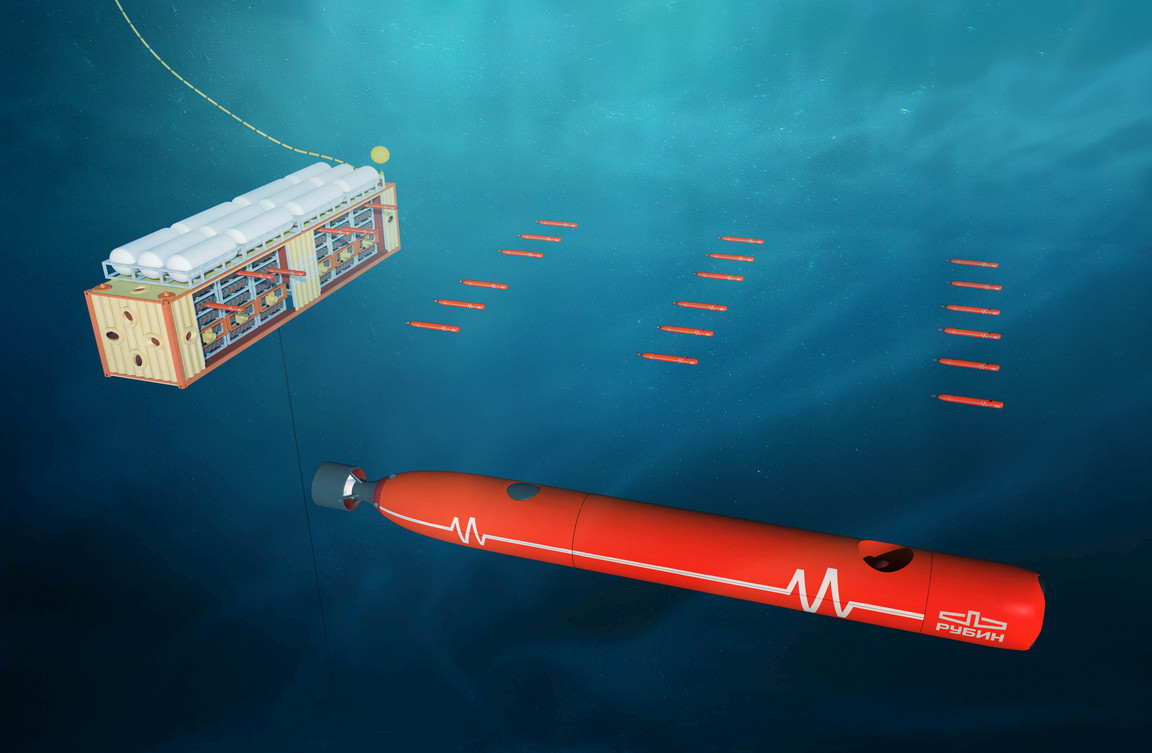
At the Army-2023 show, Rubin Design Bureau presents a concept design: a group of autonomous unmanned underwater vehicles (AUVs) for offshore geophysical surveys. Concept design development is at the R&D stage, Rubin says.
This system shall ensure seismic prospecting activities during any season and at any sea state including severe ice conditions.
The designed system includes a group of small vehicle-receivers and one large vehicle-emitter of seismic signals. Group of AUV-Receivers (200 or more small underwater drones) is transported in the depot module at the support vessel. When arrived at the target point, the depot module submerges and the Receivers leave the module and operate according to the stored program. The bottom beacons and single small AUVs in the group that are provided with leader function ensure positioning. The entire group of AUVs is controlled from the support vessel.
This system would allow extending the range of geophysical surveys and developing new technologies of offshore seismic prospecting. Seismic arrays of various format and at various depth extend the range of detected signals.
Large robotic Emitter generates acoustic impulse penetrating the seabed. This impulse propagates through the Earth's crustal structure and the recorders in AUV-Receivers detect the response. This is how location of hydrocarbons and structure of their bedding is found. Two hundred small robots would cover the area up to 600 thousand sq.m. with endurance of the vehicles being up to 12 hours. The control system capacity allows operating up to one thousand of AUV-Receivers to meet Customer's requirements for extensive exploration.

Besides, the system focuses on safe hydrocarbon production: being in the mode of energy saving the AUVs can stay at the sea bottom near the produced wellhead and monitor its status for several months.
The system can also perform other tasks: acquisition of data on marine environment, mapping, inspection of subsea infrastructure, acoustic profiling. AUVs record seismic vibrations and thus allow determining both current and predicted status of offshore drilling platforms.
Main specifications of the System: number of AUV-Receivers in the system - from 200 to 1000 vehicles; number of AUV-Emitters - 1 and more vehicles; AUV operating depth - up to 200 m; submersion depth of AUV-Receiver/Emitter modules - up to 50-70 m; AUV-Emitter parameters - length approx. 10 m, diameter 1.2 m; AUV-Receiver parameters - length approx. 1.8 ą╝, diameter 15 cm; AUV speed - up to 3 knots.



